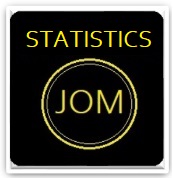THE IMPACT OF TAX AVOIDANCE AND AUDIT QUALITY ON TAX AMNESTY PROGRAM
Abstract
Purpose this study was to examine the effect of tax avoidance and audit quality on companies participating in tax amnesty based on Law no. 11 of 2016 concerning Tax Amnesty. Data processing uses logistic regression. Results of study found that companies with high audit quality have a lower participating in tax amnesty. Regression results showed that the tax avoidance has no effect on companies participating in tax amnesty. Implication of the research is as initial information for government as a tax regulator in taking or formulating policies related to tax amnesty. One of conditions for receiving tax amnesty is companies regularly report their tax payments.
Keywords: Tax Amnesty, Tax Avoidance, Audit Quality, Big Four
Downloads
References
Boone. JP. Khurana. IK. & Raman. KK (2010). Do the big 4 and the second-tier firms provide audits of similar quality?. Journal of Accounting and Public Policy. 29(4). 330-352.
boss. P.. & Jetter. M. (2012). Liberalization and tax amnesty in a developing economy. Economic Modeling. 29(3). 761-765.
Buckwalter. ND. Sharp. NY. Wilde. JH. & Wood. DA (2014). are state tax amnesty programs associated with financial reporting irregularities?. Public Finance Review. 42(6). 774-799.
Danny Darussalam Tax Center (DDTC). (2016). The Importance of the Role of Tax Amnesty in 2016. Inside Tax. edition 37.
Goddess, Mustia. (2017). The role of social capital on child stunting in Indonesia.Thesis: University Indonesia.
Elder, RJ, Beasley, MS, & Arens, AA (2011). Auditing and assurance services. Peason Higher Ed.
Graham. JR. Raedy. JS. & Shackleford. DA (2012). Research in accounting for income taxes. Journal of Accounting and Economics. 53(1-2). 412-434.)
Gray. I.. Manson. S. Crawford. L. (2015). The Audit Process: Principles. Practice And Cases. Cengage Learning EMEA.
Hanlon. M.. & Heitzman. S. (2010). A review of tax research. Journal of Accounting and Economics. 50(2-3). 127-178.
Lanis. R.. & Richardson. G. (2012). Corporate social responsibility and tax aggressiveness: An empirical analysis. Journal of Accounting and Public Policy. 31(1). 86-108.
Lawrence. A.. Minutti-Meza. M.. & Zhang. P. (2011). Can Big 4 versus non-Big 4 differences in audit-quality proxies be attributed to client characteristics?. The Accounting Review. 86(1). 259-286.
Lietz, G. (2014). Tax avoidance vs. tax aggressiveness: a unifying conceptual framework. University of Munster: Institute of Accounting and Taxation.
Huslin. D. (2015). The effect of sunset policy, tax amnesty, and tax sanctions on taxpayer compliance (empirical study at the Pratama Jakarta Kembangan Tax Service Office). Accounting journal. 19(2). 225-241.
Ross. JM. & Buckwalter. ND (2013). Strategic tax planning for state tax amnesties: evidence from eligibility period restrictions. Public Finance Review. 41(3). 275-301.
Setyaningsih. T.. & Okfitasari. A. (2017). Why do taxpayers participate in the tax amnesty (case study in Solo). EQUITY (Journal of Economics and Finance). 20(4). 415-433.
Pliers. TY. & Firth. M. (2012). Earnings persistence and stock market reactions to the different information in book-tax differences: Evidence from China. The International Journal of Accounting. 47(3). 369-397.
Typhoon. M. (2017). Tax amnesty for social contribution in Romanian legal frameworks. Journal of Public Administration. Finance and Law. 190.
Tax Amnesty Law Number 11 of 2016 concerning Tax Amnesty
Yustiari. SH (2016). Tax amnesty in the perspective of good governance. Scientific Journal of Public Administration. 2(4).

 David Pangaribuan(1*)
David Pangaribuan(1*)



